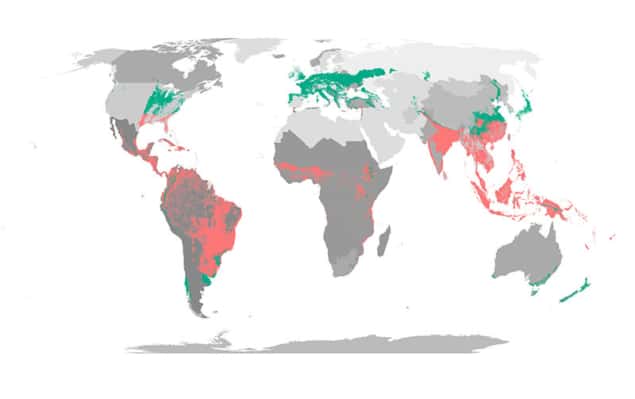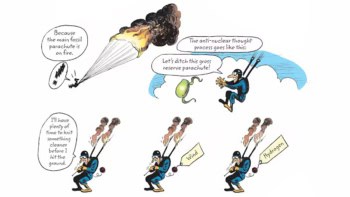
Limiting average global temperature rise to 2°C will require strong commitment and innovative solutions. In the first study of its type, a German team has assessed whether removing carbon dioxide from the atmosphere by enhancing the weathering of rocks has potential.
Chemical rock weathering, where rainwater reacts with the minerals in rock and breaks it down, naturally removes around 1.1 Gt of carbon dioxide per year from the atmosphere. This process could be enhanced by grinding rocks and spreading them over the ground in humid regions, so that the rock grains dissolve in water and travel to the ocean, storing the carbon dioxide.
Jessica Strefler and Thorben Amann from Potsdam Institute for Climate Impact Research and Universität Hamburg assessed the potential of this method, considering the amount of carbon dioxide that it can trap and the associated economic costs for different rock types and areas worldwide.
The team showed that this method needs a high weathering rate to be a significant and economically viable option. In sub-tropical regions such as Brazil, India and south China, it has potential due to higher temperatures, humidity and suitability of the land. In such areas, chemical rock weathering could remove as much as 95 Gt of carbon dioxide per year using dunite – a volcanic rock made up primarily of one mineral – and 4.9 Gt of carbon dioxide per year using basalt, a volcanic rock of mixed minerals.
Although it traps significantly less carbon dioxide than dunite, the use of basalt would have many co-benefits for the soil, as it is rich in nutrients such as phosphorus, magnesium and calcium, whereas dunite contains harmful substances, such as chromium and nickel, that the process could release. From an economic perspective, the method is estimated to be more than twice as expensive as afforestation, but just less than 10 times cheaper than direct air capture.
“This first comprehensive assessment of costs and possibilities shows that enhanced weathering, especially of basalt rock, could be an attractive option to support climate change mitigation, especially for tropical and subtropical regions where the carbon dioxide uptake potential is the highest,” said Strefler. “However, given the costs and the mass of rocks that would need to be moved, it can likely provide only a small additional contribution.”
There are currently major uncertainties in the estimation of carbon dioxide consumption by this weathering method, so there is a need to improve models to determine its full potential.
Scientists must quantify the weathering rate under natural conditions, as well as the rate at which the soil naturally produces carbon dioxide through respiration. An accurate estimation of these variables should reveal the true potential of carbon dioxide capture via weathering and whether it is viable for use on a large scale.



